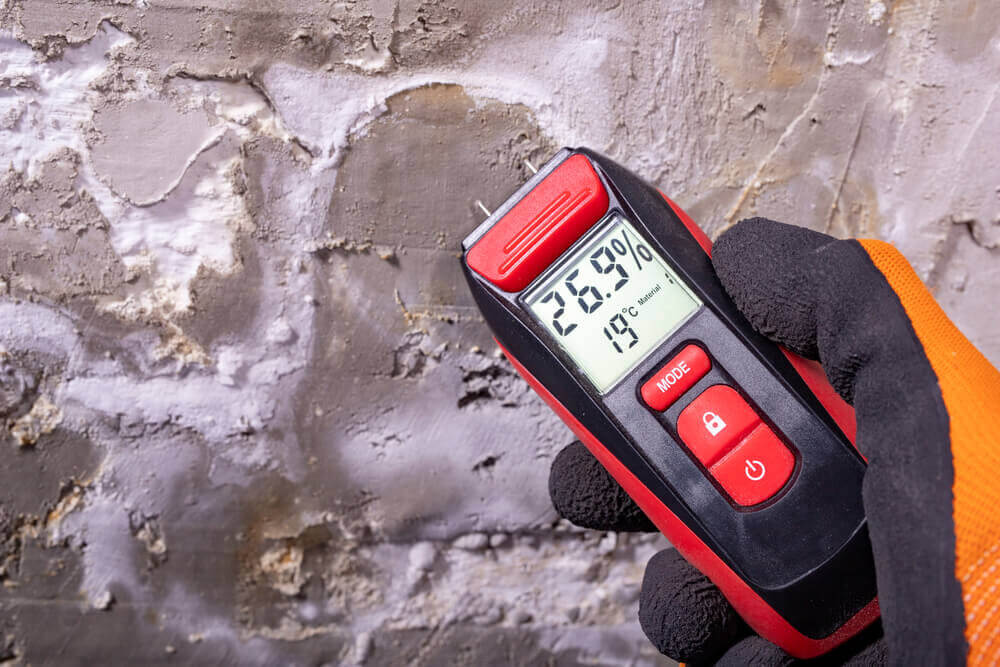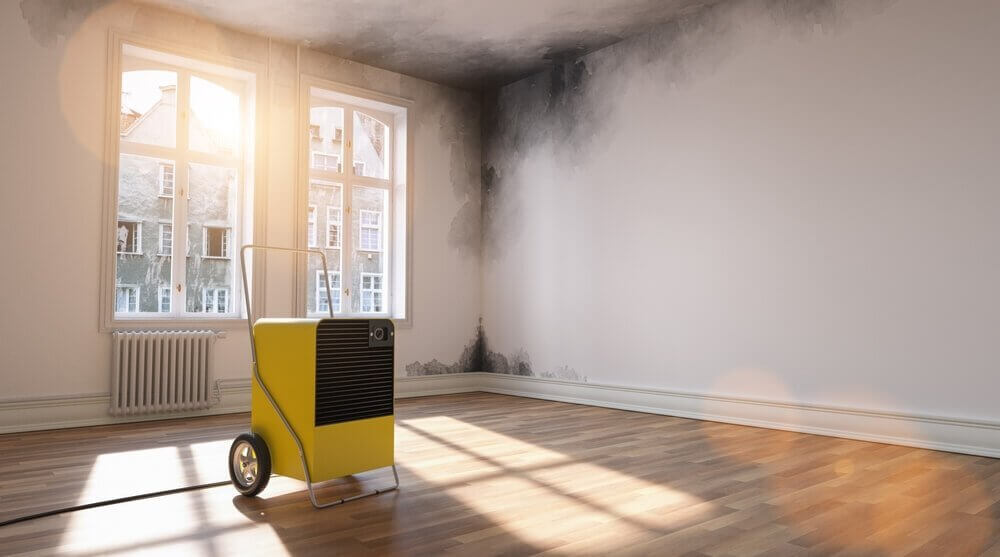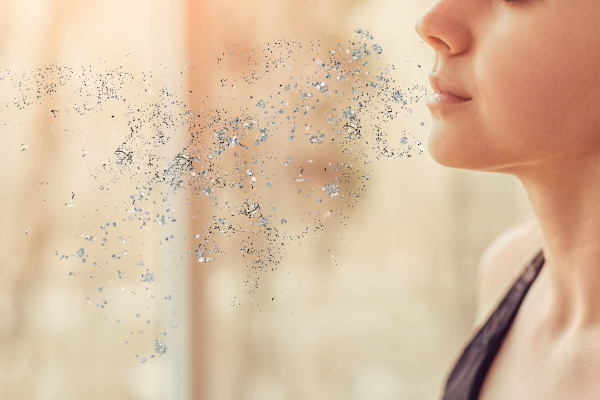Black mould growth occurs rapidly in homes afflicted with spots of high humidity, excessive moisture, and poor ventilation. Like an infection, when left to spread, black mould will not only impact your home’s structural integrity, but also place those living there at risk, releasing a series of harmful spores that worsen respiratory infections, asthma and allergic reactions.
In this article, we’ll explore some common black mould causes, areas to check in your property, and some simple solutions for removal and prevention.
What is Black Mould?
‘Black mould’ is actually a broader term given to various fungi that grow from damp surfaces throughout a property, including species like Aspergillus Niger, Alternaria, Cladosporium and the rarer Stachybotrys chartarum.
These moulds thrive in high-humidity areas, particularly bathrooms and kitchens, where steam from cooking or washing will create a more significant amount of moisture in the surrounding air without proper ventilation.
Unlike other forms of mould, black mould forms in small clusters of circular-shaped spots that are dark green, brown or black in colour. It comes in a range of homes and commercial buildings across New Zealand, with the mixture of subtropical and cooler climates across both islands creating a perfect breeding ground.

How Does Mould Grow?
Black mould spores easily find their way into homes and buildings through openings like doors, windows and ductwork. It needs a consistent moisture supply to take root, though, propagating mainly on materials high in cellulose, like fibreboard, gypsum board, and grout.
Moisture-laden air interacting with cooler air will quickly spur mould development, which, as an asexual organism, means it can rapidly multiply. In fact, a single spore can reproduce trillions of mould spores within just a few days.
Black mould is also somewhat different from many other mould types as it can produce toxic substances known as trichothecene mycotoxins, which can lead to human health issues when inhaled or ingested.
If you’re wondering, ‘Why does mould grow on walls, around windows and across ceilings more than other areas of the house?’, there are three primary black mould causes, including:
Condensation
When the temperature drops, we often batten down our homes to keep the warm air trapped inside. Unfortunately, when warm, moist air rises and clashes with cold surfaces, it cools down, and the moisture it carries condenses into water droplets.
The same is true year-round for bathrooms and kitchens when hot water used for bathing or cooking turns to steam, fills the space, and there isn’t sufficient ventilation to dissipate it.
Black mould loves these spaces as they receive a plentiful environment to grow.
Penetrating Damp
Penetrating damp occurs when moisture from sources outside a building, such as wind-driven rain, infiltrates the surrounding walls. Porous materials like brick then absorb this moisture with repeated exposure, causing wet patches, discolouration, and peeling paint or wallpaper. As the moisture travels through exterior walls to settle within interior surfaces, it creates damp environments prime for black mould growing.
Often caused by poorly designed or maintained building details, such as leaking gutters, damaged roof tiles, and cracks in walls, penetrating damp can be resolved by fixing the defect. Blocked drainage systems can also contribute to such dampness, as can damaged door frames. Sometimes, masonry walls may not be weathertight enough for local conditions, requiring external render, cladding, or weatherproof paints to improve resistance.
Rising Damp
Rising damp is another of the common causes of black mould. Moisture from the ground can often rise through capillaries in masonry and beneath the walls of a building, saturating the material and bringing with it salts that can damage plaster, paintwork and even brickwork.
Over time, this moisture creates a damp environment conducive to black mould growing in your home.
Modern properties should have what is known as a ‘Damp-Proof Course’ or ‘DPC’ in place to prevent rising damp from the surface below the property, but the material can become damaged, leaving your home at risk. Older properties typically do not have a DPC.
Where Does Mould Grow?
As discussed above, mould can grow in any moist environment, but it is most likely to be found in damp, dark, and poorly ventilated areas, including:
- Bathrooms and kitchens due to high humidity levels from showers, baths, and cooking at high temperatures
- Basements and crawl spaces as they often lack adequate ventilation and trap humidity
- Near windows and external walls where repeated condensation is more likely to form and collect
- In areas with water leaks, such as around plumbing fixtures, roof leaks, or damp walls
- Next to an air-conditioner as the rapid clash of temperatures and humidity create patches of moisture
- Cupboards beneath sinks, as the spaces are closed off from the rest of the conditions, but can still reach higher heat from the water used
Again, black mould can occur anywhere throughout your property and might not always be visible. Fortunately, you may be able to locate a budding patch of black mould by following a musty and stale smell.
To prevent mould growing, ensure your home is adequately ventilated, promptly address water leaks, and maintain a consistent indoor temperature where possible.
FAQ
Is Black Mould Harmful?
Yes, black mould can prove especially harmful to those within the building by generating and spreading a collection of mycotoxins and allergens. These are particularly dangerous for:
- People with respiratory problems, skin issues, and/or a weakened immune system
- Children
- Elderly people
Symptoms may be mistaken for a cold, so be mindful of any allergy symptoms or health problems like repeated sneezing, runny noses, skin rashes, eye inflammation, or an increase in asthma attacks.
How Do You Remove Black Mould?
To remove black mould, the process must start with an accurate diagnosis. For example, your methods will differ if the underlying moisture issue is penetrating damp, rising damp, or caused by condensation.
From here, adorn some rubber boots, face masks and protective clothing and proceed to:
- Penetrating damp: Identify and repair the source of moisture infiltration and clean the affected area with a mould-killing solution. Allow time to dry completely.
- Rising damp: Install or repair the damp-proof course (DPC) to prevent groundwater from rising and stop mould growth. After addressing the DPC, clean the affected area using a mould-killing solution.
- Condensation: Improve ventilation in your home by installing exhaust fans, opening windows to let in some fresh air, or using a dehumidifier to reduce moisture levels. Once you have controlled the humidity, clean the mouldy areas with your mould-killing solution and allow them to dry completely.
For extensive mould infestations, we recommend consulting a professional mould removal company like our team at Restoration Specialists.
How to Prevent Black Mould
Now you know how mould grows (and where), preventing it can be quite straightforward.
Take great effort to control moisture levels in your home by ensuring proper ventilation, fixing leaks as soon as they arise, and maintaining consistent indoor temperatures.
Don’t forget to also regularly dry and clean damp-prone areas, such as your bathrooms and kitchens, and consider using mould-resistant materials during any new home renovations.
Final Thoughts
Understanding common black mould causes, such as condensation, penetrating damp, and rising damp, will help property owners maintain a healthy living or working environment.
By addressing moisture issues early and ensuring proper ventilation, you can prevent mould growing and protect your family’s health.
Why Choose Restate Property Restoration to Address Your Black Mould?
If you suspect you have black mould currently taking root in your property, a professional and experienced response can offer you peace of mind regarding the well-being of your building’s structural integrity and your family’s ongoing health.
Restate Property Restoration are experts in mould removal and remediation, offering refined services to tackle even the most severe infestations. Given the potential risks posed, you do not want to delay applying a proven solution. Reach out to the skilled team at Restate for immediate support today by calling us at 0800 332 664 or sending an email to info@resspec.co.nz.


